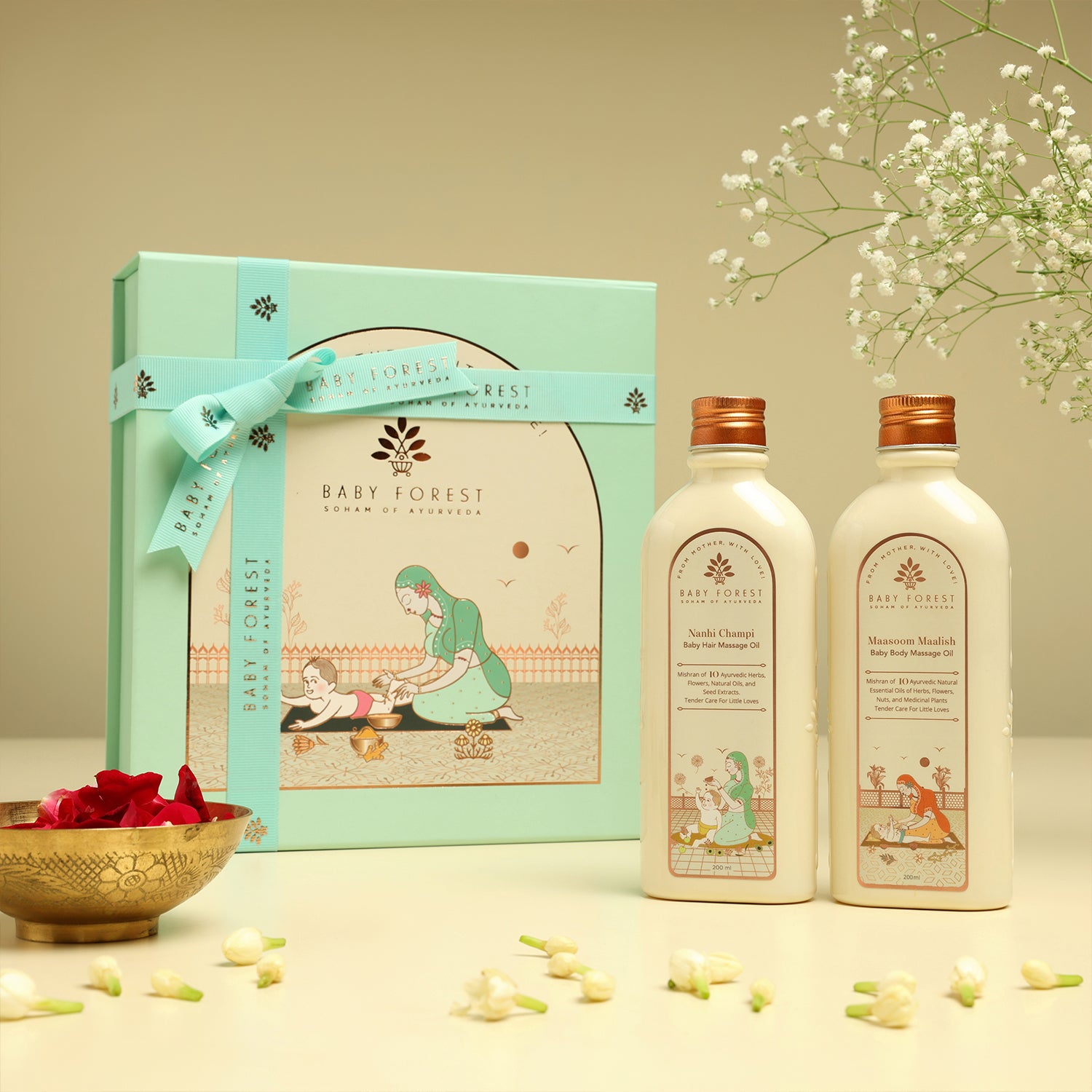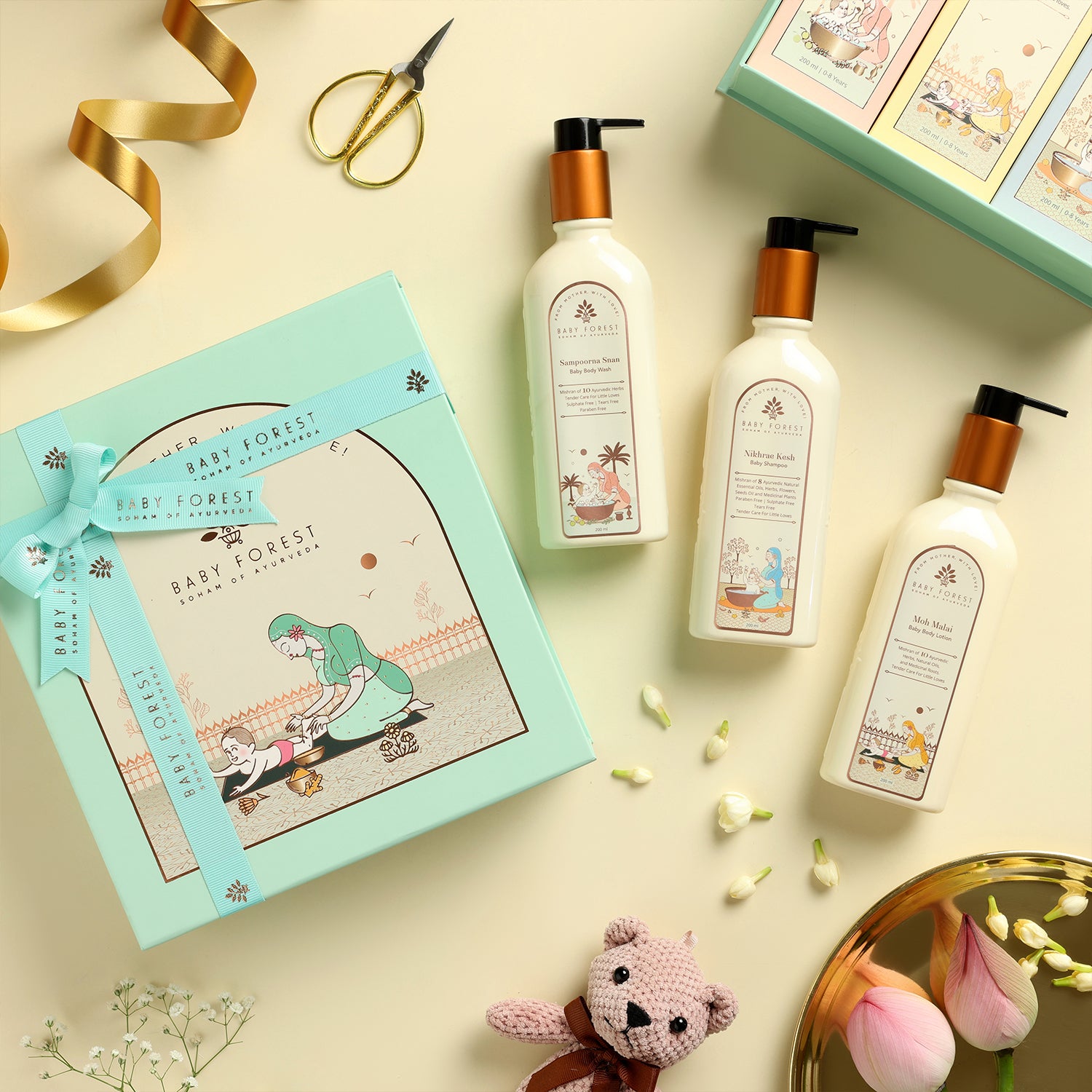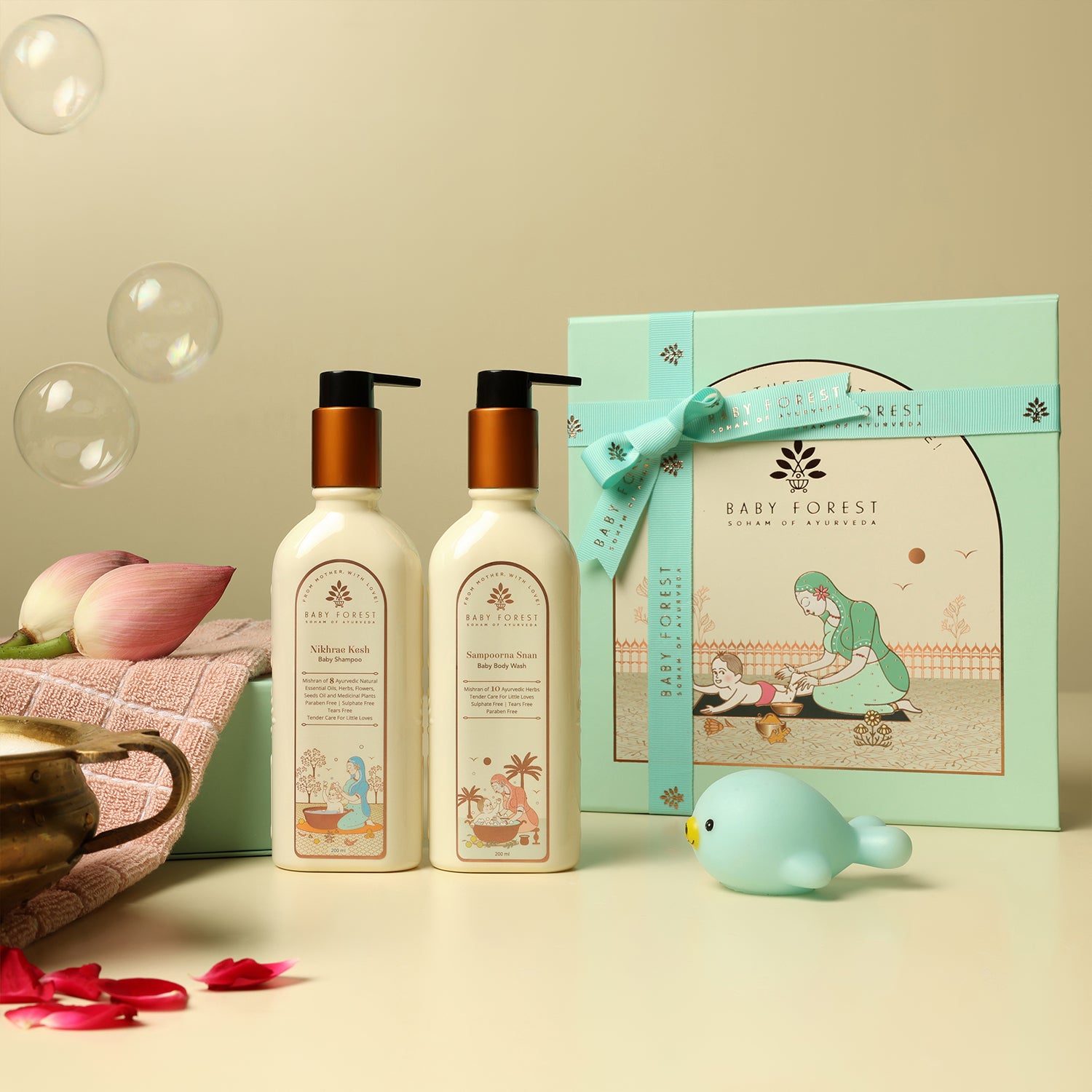
Protecting Baby’s Scalp in Winter: Gentle, Hydrating Care Tips


Rs. 2,340.00

Rs. 2,505.00

Rs. 1,740.00

Rs. 1,845.00

Rs. 475.00

Rs. 645.00

Rs. 395.00

Protecting Baby’s Scalp in Winter: Gentle, Hydrating Care Tips

Travelling in your second trimester? Here’s what to know!

Why Rose Water Is a Gentle Skincare Secret for Babies

What Causes Colic? A Simple Guide for Parents

Second Trimester Guide for Moms-to-Be: Emotional and Physical Well-Being
There's always been a place for baby massage oil in infant care. During monsoon, that place becomes more deliberate. The skin starts behaving differently. Damp air sits heavy, and instead of keeping things hydrated, it clogs, rubs, and irritates. A baby's skin, thinner and faster to react than an adult's, doesn't respond well to that kind of shift. What works in dry heat will not hold up when the air is wet, and the clothes stay damp longer than they should. So, then the question isn't whether massage is useful; it's what kind and with what. Picking the best oil for baby massage in the rainy season means understanding texture, weight, and how that oil will behave once it's on the skin. A wrong choice doesn't just feel greasy; it traps heat, holds dust, and sometimes even feeds rashes. A right one? It soothes, strengthens, and holds the skin together when everything outside it feels unstable.
Humidity fills the air, but that doesn't mean the skin stays hydrated. For babies, it's often the opposite. Their skin barrier isn't fully developed, and their sweat glands don't function well yet. What that creates is inconsistency, such as dry spots near folds, sweat rashes under the arms, and forehead patches that transition from oily to flaky within hours. It isn't predictable. A fan is turned on too long, or wet clothes changed just a bit too late, an irritation sets in. And it doesn't stop at the skin. Damp walls and poor ventilation shift the air inside homes, sometimes triggering congestion and even mild respiratory discomfort. The body doesn't respond to the monsoon like it does to cold or heat. It reacts in different, sometimes in unpredictable ways, and it often shows up on the skin first.

Massage promotes circulation, aids digestion, and soothes irritability, and during the rainy season, it also helps keep the body balanced. It can regulate body temperature, prevent the chill from setting into tiny limbs, and maintain skin elasticity in spite of atmospheric fluctuations. Gentle pressure applied during massage can also ease minor body stiffness caused by damp conditions. When done consistently, it becomes an immune-boosting ritual with visible benefits over time.
Natural oils tend to work in synergy with the skin's own lipids. They don't just sit on the surface but penetrate, nourish, and repair. Most synthetic oils, on the other hand, are petroleum-based or overly refined. They may block pores or cause reactions in babies with sensitive skin. Artificial fragrances, emulsifiers, and preservatives often found in such products pose unnecessary risks. A cold-pressed, natural baby massage oil free from additives is easier to absorb and less likely to interfere with the skin's rhythm, especially when weather conditions are already compromising it.
Humid dryness may sound like a contradiction, but it's a common monsoon problem. The air is moist, but that very humidity can pull water out of the skin's deeper layers due to transepidermal water loss. Natural oils form a breathable layer on the skin, helping to retain internal hydration without clogging pores. Oils like almond and sesame create a protective yet porous barrier, allowing the skin to breathe while retaining moisture longer than lotions or creams.
Transepidermal water loss is when water from the skin slowly escapes into the air. This makes the skin dry. In babies, it happens more easily because their skin is still developing.
Certain oils are not only skin protectors but also immune allies. Take sesame oil, for instance; its warming properties can help stabilize a baby's body temperature and improve circulation. Coconut oil contains lauric acid, which is known for its antibacterial properties. When massaged into the skin, these oils can stimulate the lymphatic system, support detoxification, and help the body resist infections commonly seen during the monsoon. This isn't immunity from the inside alone; it's supported externally through touch and absorption.
The folds of baby skin, such as the neck, thighs, and underarms, are breeding grounds for fungal infections when dampness persists. Oils with antifungal or antibacterial properties can provide a first layer of defense. Virgin coconut oil is a widely trusted option. It soothes, cools, and fights yeast-like rashes. Mustard oil, although used with caution due to its intensity, also possesses antimicrobial properties. However, it's almond oil for baby massage that stands out in its mildness, gentle enough for daily use yet protective enough to guard against friction-induced redness and minor rashes.
While many options exist, not all oils suit all weather. The best oil for baby massage in rainy season must be lightweight, non-comedogenic, and protective.
Parents still wondering which oil is best for baby massage in rainy season need to look not just at the weather but also at skin response. A trial-and-observe approach works best.
Begin with warm hands always. Cold fingers startle babies and constrict rather than relax. The room should be dry, enclosed, and free from gusts of air. A simple cotton sheet on a firm surface is enough, and there is no need for extra padding that traps moisture. Use gentle, fluid strokes; there's no advantage in pressing hard, especially along the spine or joints. This isn't physiotherapy, but just gentle daily care. During the monsoon, 10 to 15 minutes of massage is sufficient, as prolonged exposure to even indoor humidity can cool the baby down too much. After the massage, don't leave the baby massage oil sitting on the skin for long. A mild, lukewarm bath or thorough wiping ensures the skin doesn't become sticky, which is often how dust and microbes get invited.
Timing matters more than it's given credit for. Early mornings are usually too damp and cool. Evenings are unpredictable. That leaves late morning, roughly between 10:30 AM and noon, as the safest window. The air has warmed up just enough, natural light is still available, and there's ample time to finish the massage, clean the baby, and let the skin breathe before humidity rises again. If you're considering a post-sunset session, it's only worth attempting if the space is controlled, warm, dry, and free from cross-breeze.
Some oils are simply too intense. Mustard oil, unless carefully blended and patch-tested, can irritate with its pungency and isn't for every skin. Essential oils, no matter how natural, should not be used unless a pediatrician explicitly says so. They are concentrated, and that strength isn't meant for infant skin. Avoid massaging the face if there are clogged pores, visible bumps, or sweat rashes. It's unnecessary and could worsen the condition. Timing is also important: skip massage sessions when the baby has a fever, a cold, or visible skin inflammation. Additionally, avoid cold hands, metallic containers, and sitting near open windows during massage. These things seem small, but they quickly shift the experience from soothing to unsafe.
A monsoon massage routine isn't just about skin softness; it's about using nature's tools to protect, nurture, and regulate. The choice of baby massage oil should be tailored to both the environment and the baby’s skin type. When selected with care, oils like almond, sesame, and coconut can support the baby's development, health, and comfort during one of the year's most challenging seasons.

